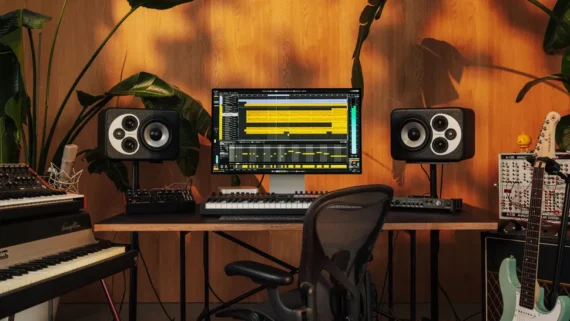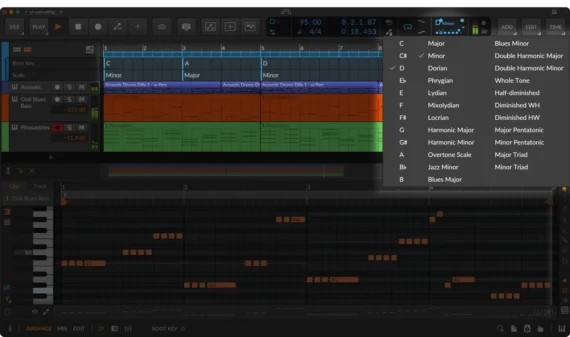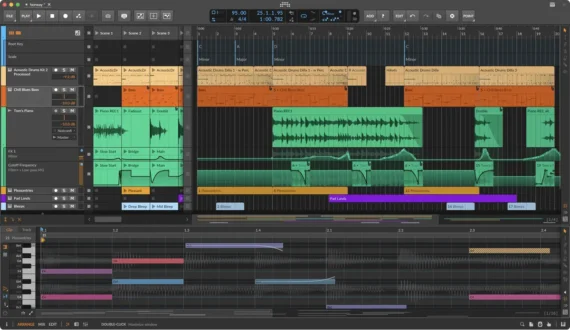Steinberg Releases Cubase 15, ‘A Major Leap Forward’ With New Instruments, Effects, AI-powered Stem Separation & More – Here’s What’s New

New tools, fresh sounds and workflow upgrades to keep your creativity moving.
Steinberg has launched the next generation of Cubase, bringing a new Expressions Maps system, Melodic Pattern Sequencer and set of six extra Modulators to its well-established flagship DAW, along with AI-powered stem separation and a raft of new plugins.
Cubase’s Pattern Editor has been upgraded with a Melodic Pattern Sequencer, joining the beat-focused Pattern Sequencer introduced with Cubase 14. With step input, custom scales, shape generators, randomization, it’s designed for crafting expressive melodies in both polyphonic and monophonic modes.

Also introduced in Cubase 14 were a set of six Modulators that can be used to modulate parameters across instruments, effects and the DAW itself. Cubase 15 brings six more Modulators to the table, spanning randomization, wavefolding, crossfading, sample and hold and more.
Cubase’s revamped Expression Maps are now easier to create, with a streamlined workflow, integration with both the Key and Score Editors, and per-articulation timing offset for improved realism.
Version 15 brings a healthy update to Cubase’s arsenal of instruments and effects, updating the Groove Agent SE drum machine with a new mixer, enhanced effects and a scalable UI and introducing a new Writing Room Synths plugin that features a selection of “production-ready, authentic vintage synths” sampled in “the world’s best songwriting rooms”.

The headline in the plugin department has to be Omnivocal, a versatile vocal synthesis plugin based on Yamaha technology. Currently in beta, Omnivocal offers a variety of different vocal styles with fine-grained control over timbre and expression, and lyric input is easy thanks to integration with Cubase’s Key Editor.
Alongside Omnivocal, Cubase 15 ships with two new effects: UltraShaper, an advanced dynamics processor with transient shaping, clip limiting and EQ built in, and PitchShifter, which does what you’d expect, with the addition of formant preservation and saturation options. All stock effect plugins now also support user interface scaling, which is a welcome update.
Finally, Cubase is playing catch-up with the competition with its new AI-powered stem separation feature, a tool that’s fast becoming a standard requirement for the modern DAW. Capable of splitting stereo mixes into four stems covering vocals, drums, bass and other instruments directly from the Timeline, Cubase’s stem separation will be useful for anyone sampling, remixing or editing mixed tracks.
And, Cubase 15 brings an array of new sounds and content along with a host of workflow upgrades and interface tweaks. Another warmly received addition is support for the DAWproject format, meaning that you’re able to easily transfer projects created in Cubase to PreSonus Studio One and Bitwig Studio, and vice versa.
“We worked closely with our community to refine what matters most, turning valuable feedback into meaningful improvements that make everyday workflows smoother and more intuitive,” says Steinberg’s Senior Marketing Manager Matthias Quellmann. “This release builds naturally on the foundation of the previous version – it feels like the perfect evolution, marking a major leap forward for Cubase.”
Cubase 15 is available in three editions: Pro is priced at $579.99, Artist is priced at $329.99 and Elements will set you back $99.99. Crossgrade and upgrade discounts are available for owners of previous versions.
Find out more on Steinberg website.






